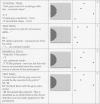Abstract
Michael (1985) distinguished between two kinds of verbal behavior which he identified as selection-based (SB) and topography-based (TB). Research has shown substantial differences between the two types of verbal behavior for nonverbal participants, but little differences has been found with highly verbal participants. This study arranged for highly verbal participants (college students) to engage in a SB task while “talking aloud,” one of Ericsson & Simon's (1993) techniques for conducting protocol analyses. The transcripts of these sessions were analyzed in terms of Skinner's (1957) elementary verbal operants. Very consistent types of statements were found to precede correct selections in the SB task. This finding lends support to the possibility that some SB conditional discriminations, and related emergent equivalence relations, are mediated by TB vocal responding when using highly verbal participants. These data also account for some of the differences observed in the SB and TB research.
Full text
PDF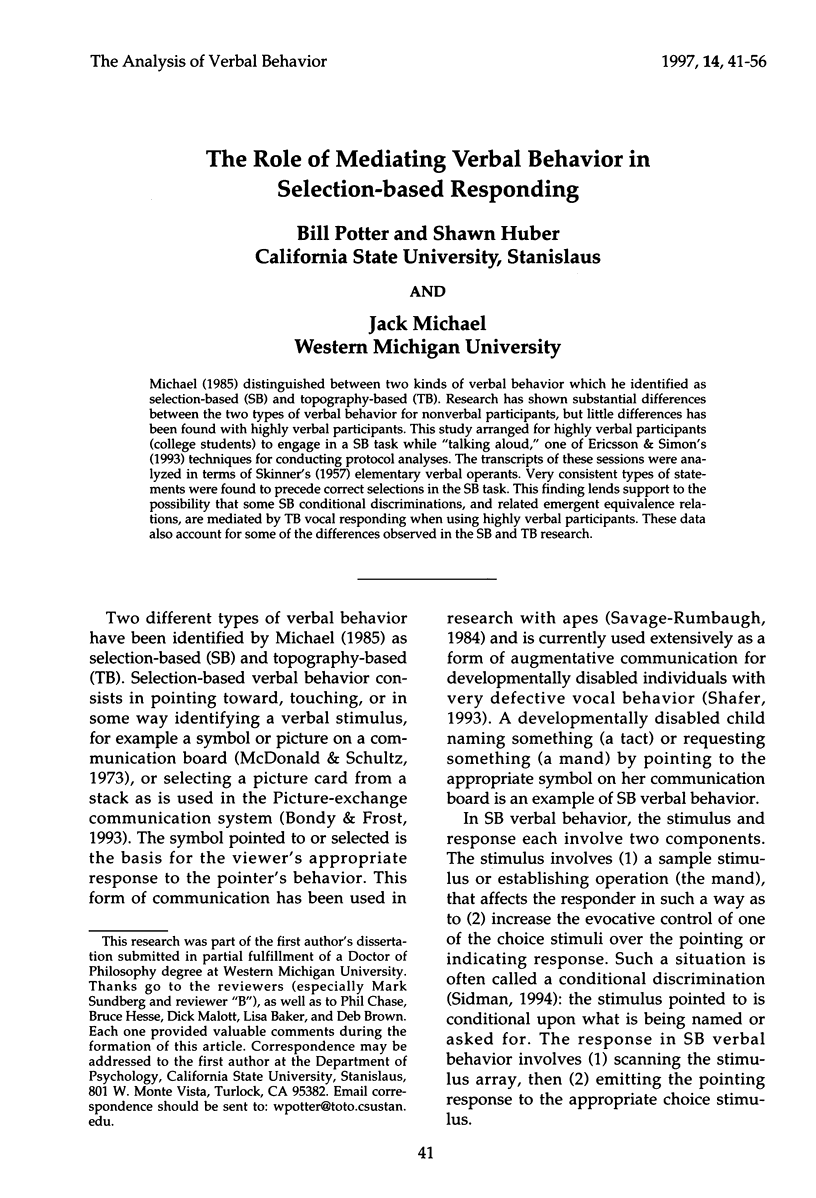
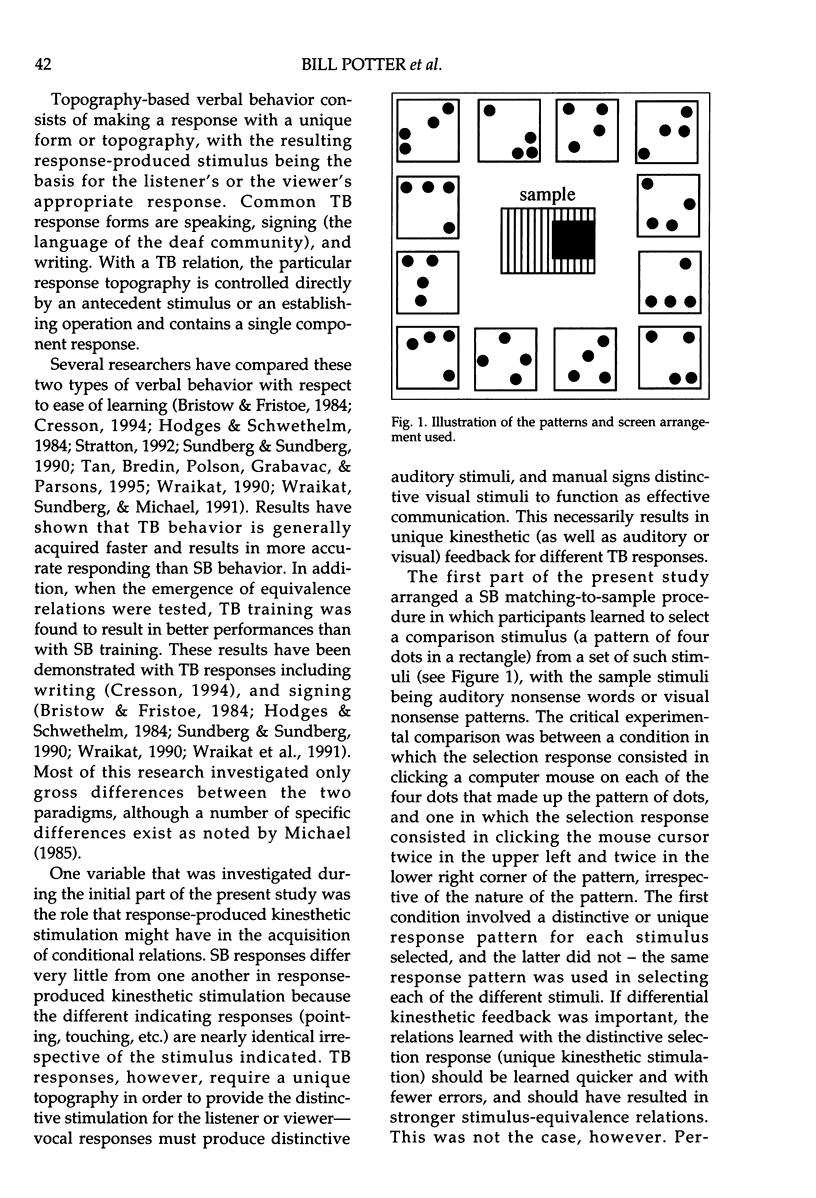
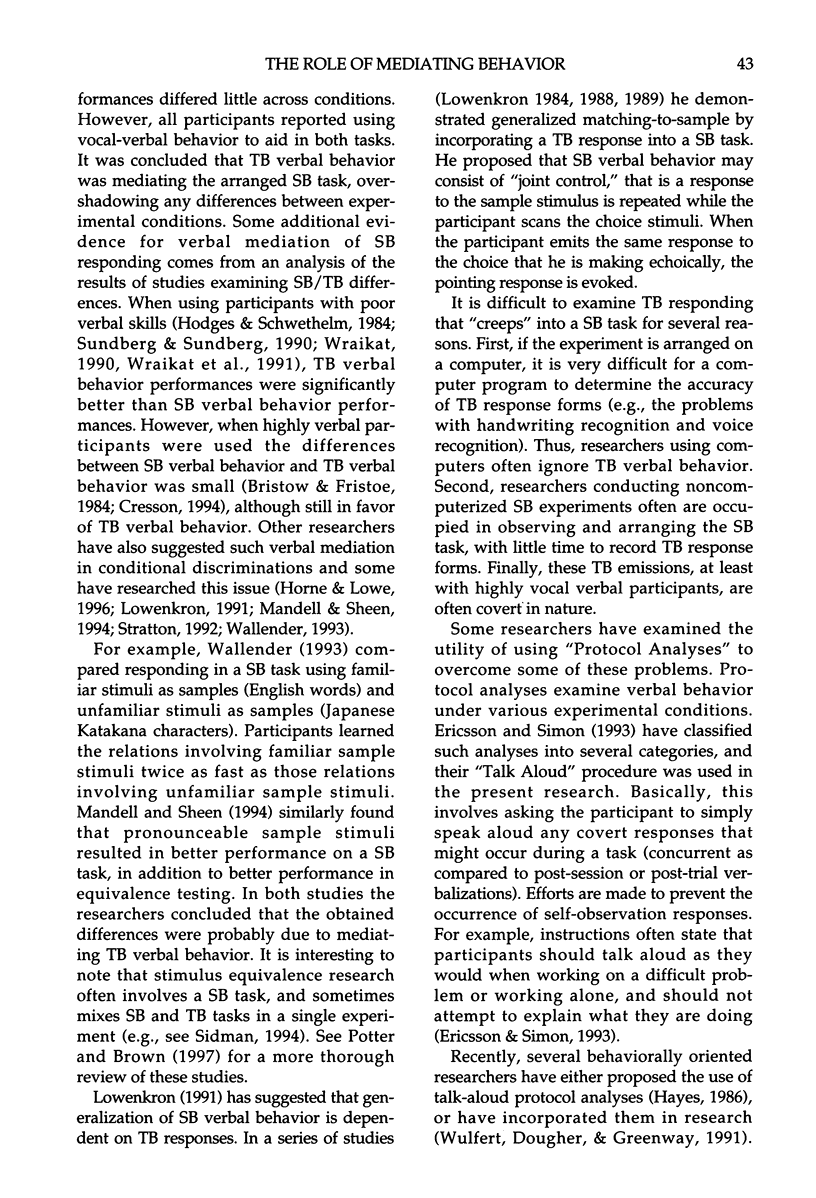
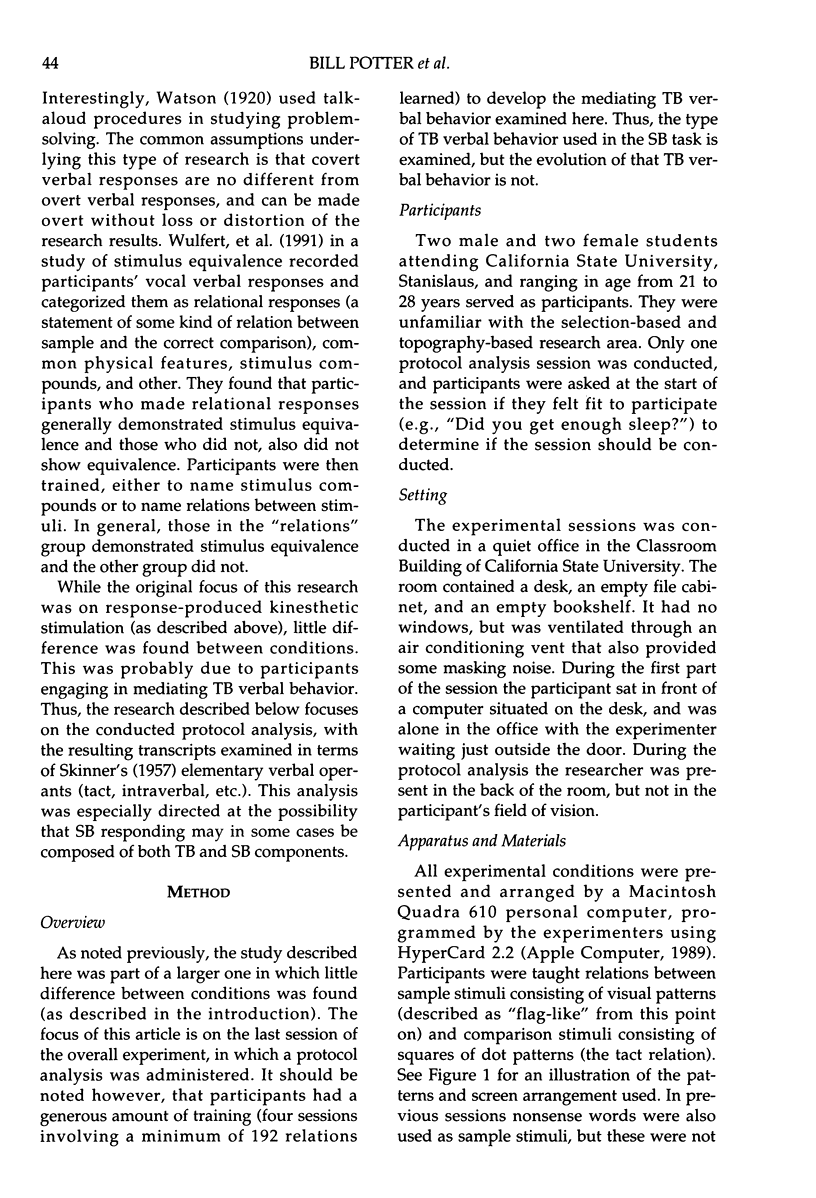
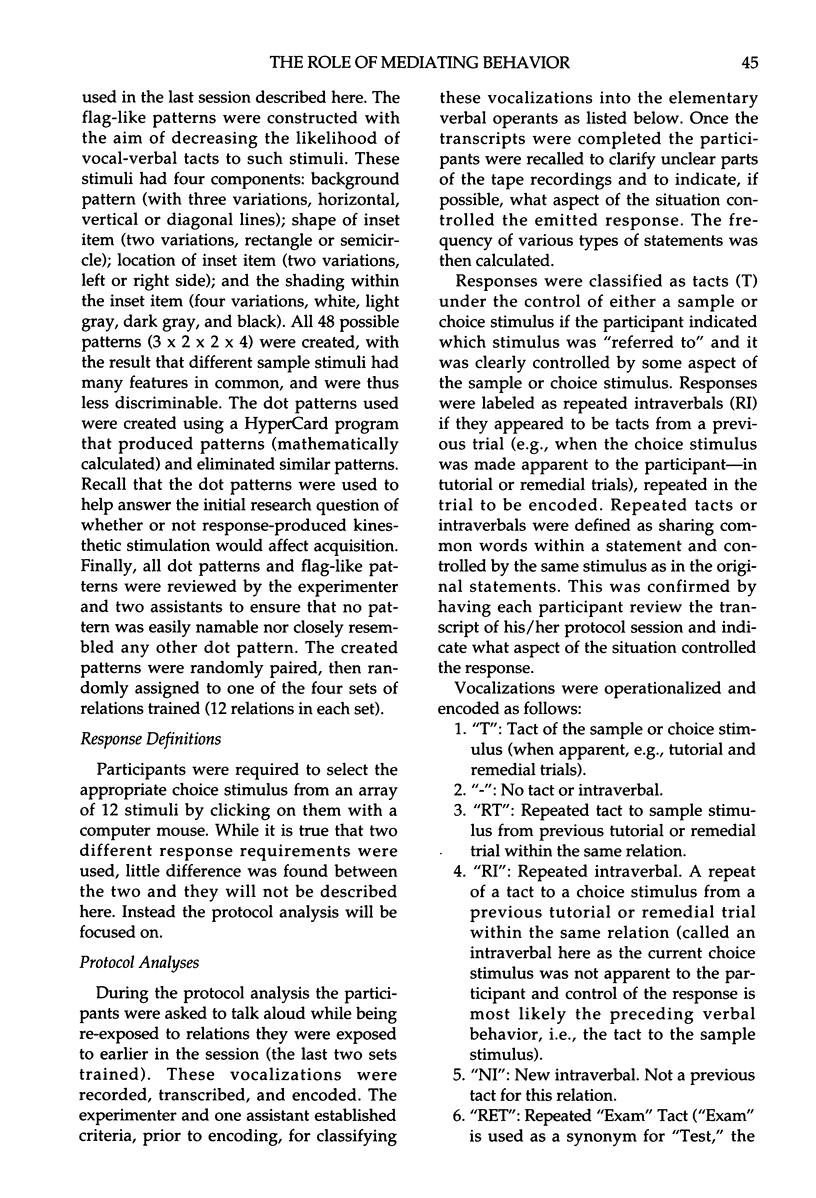


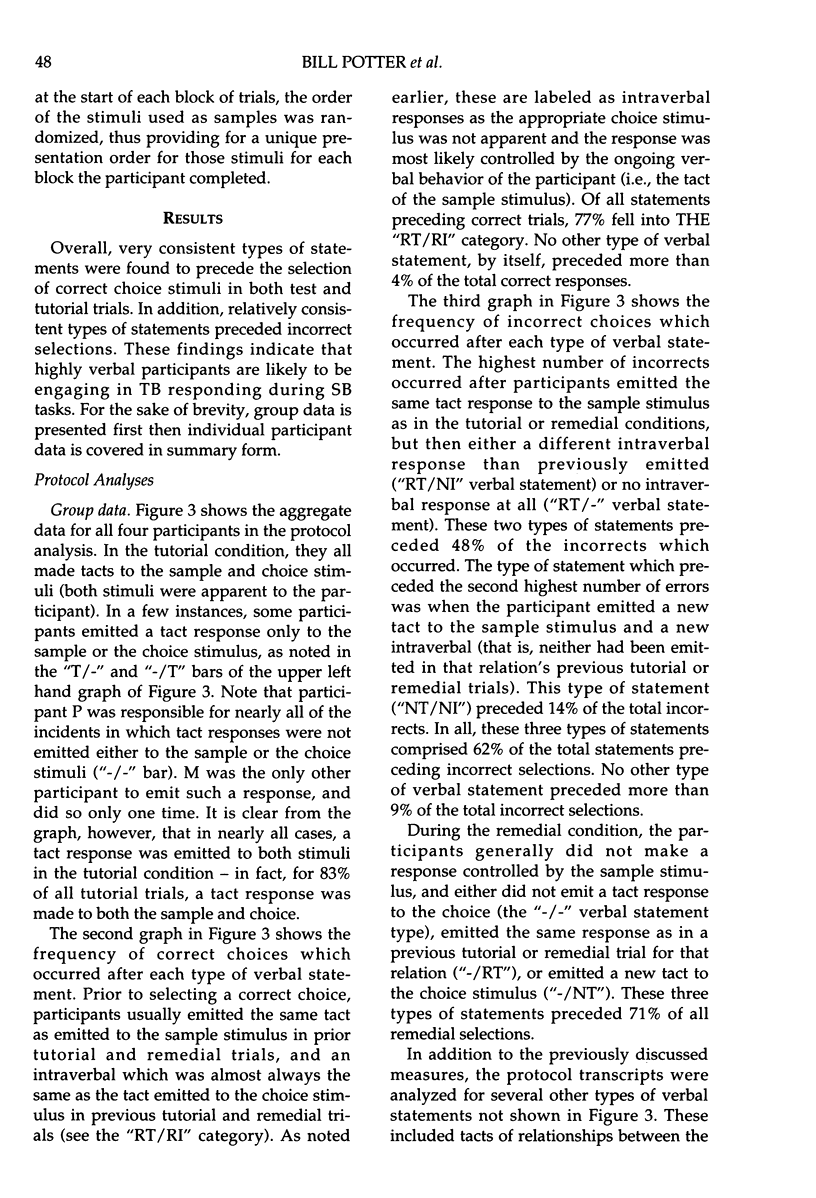
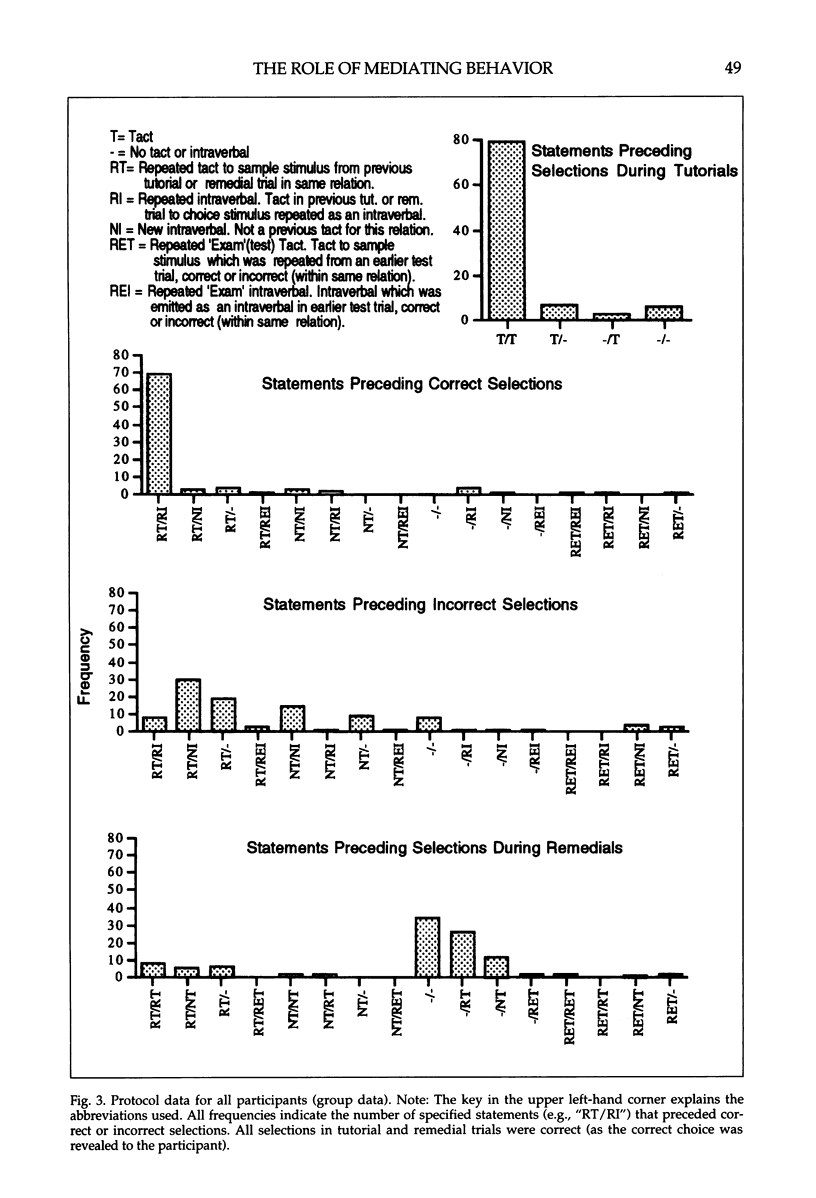
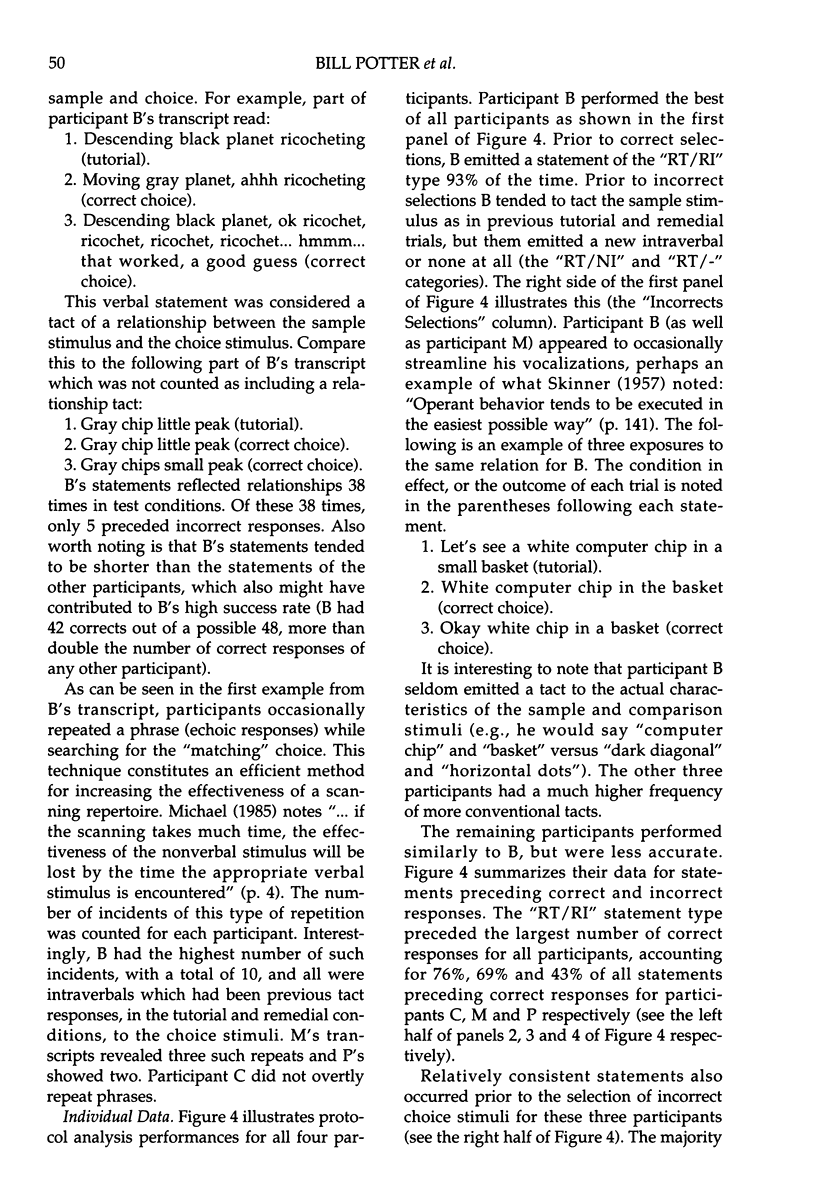
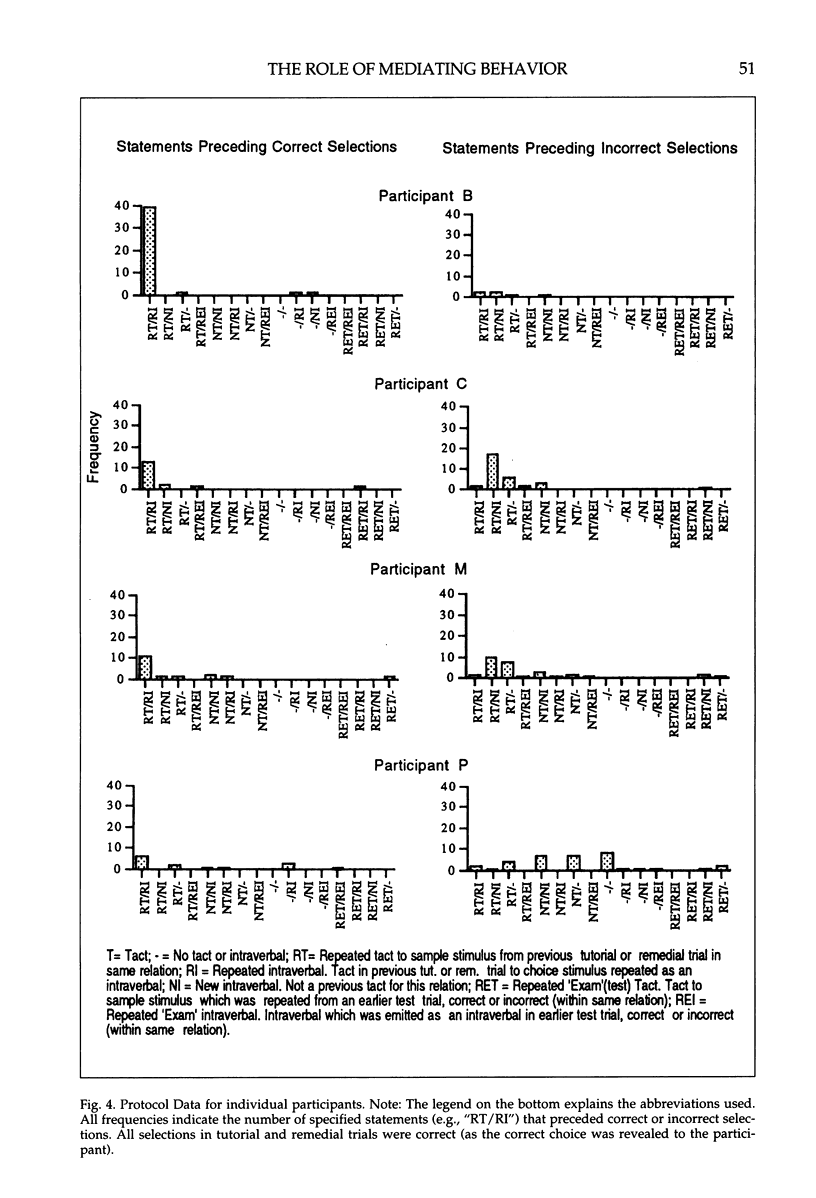
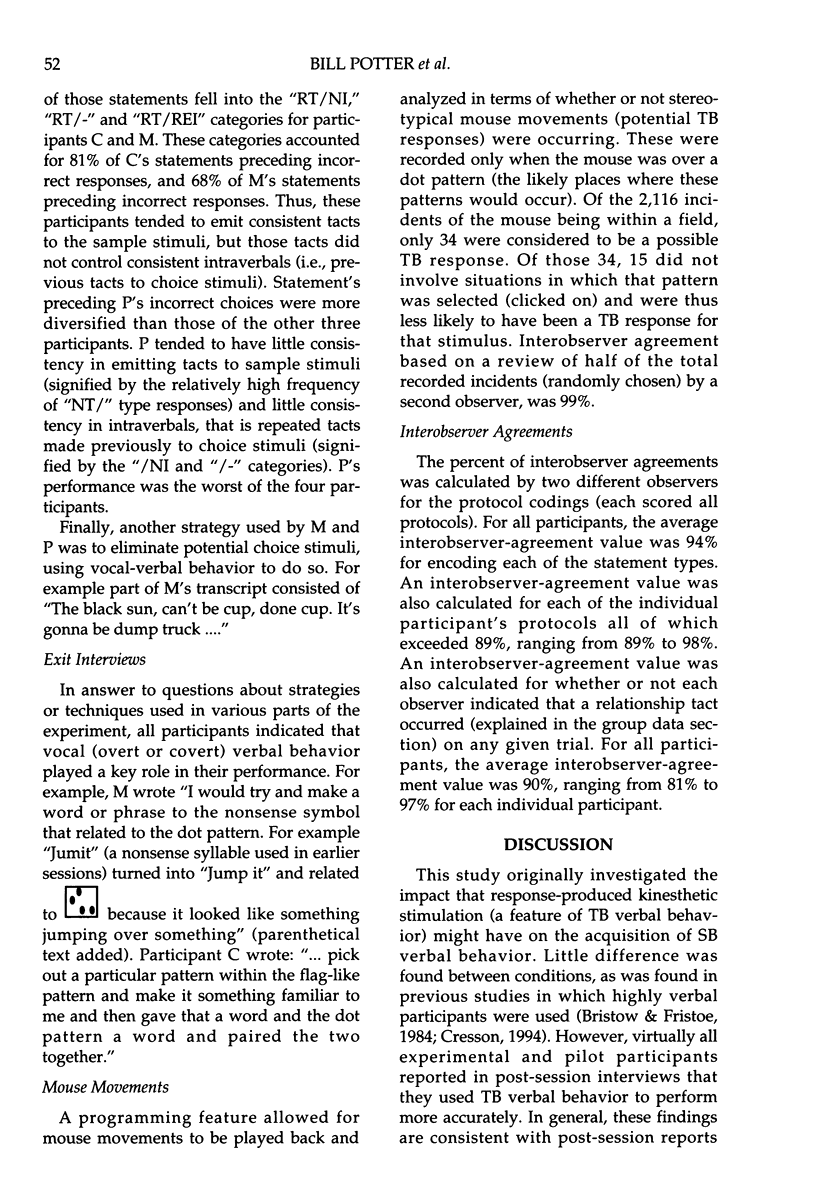
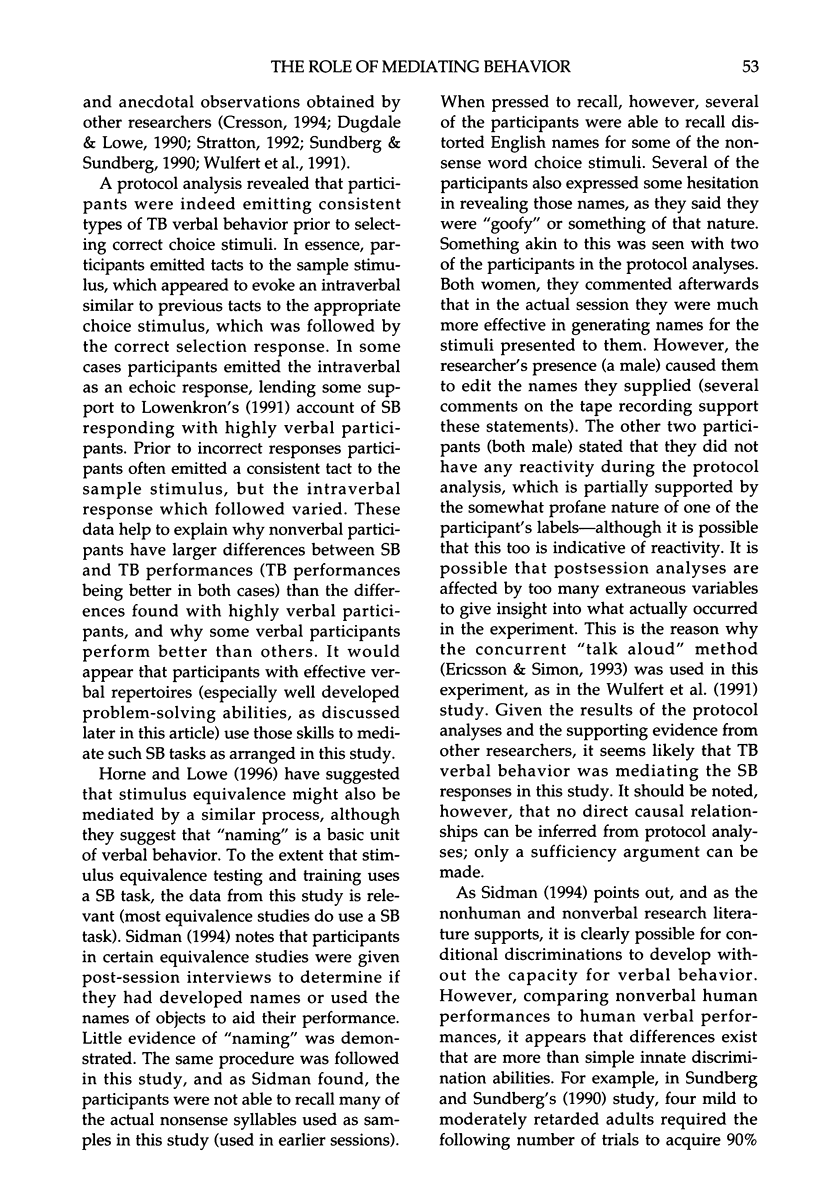
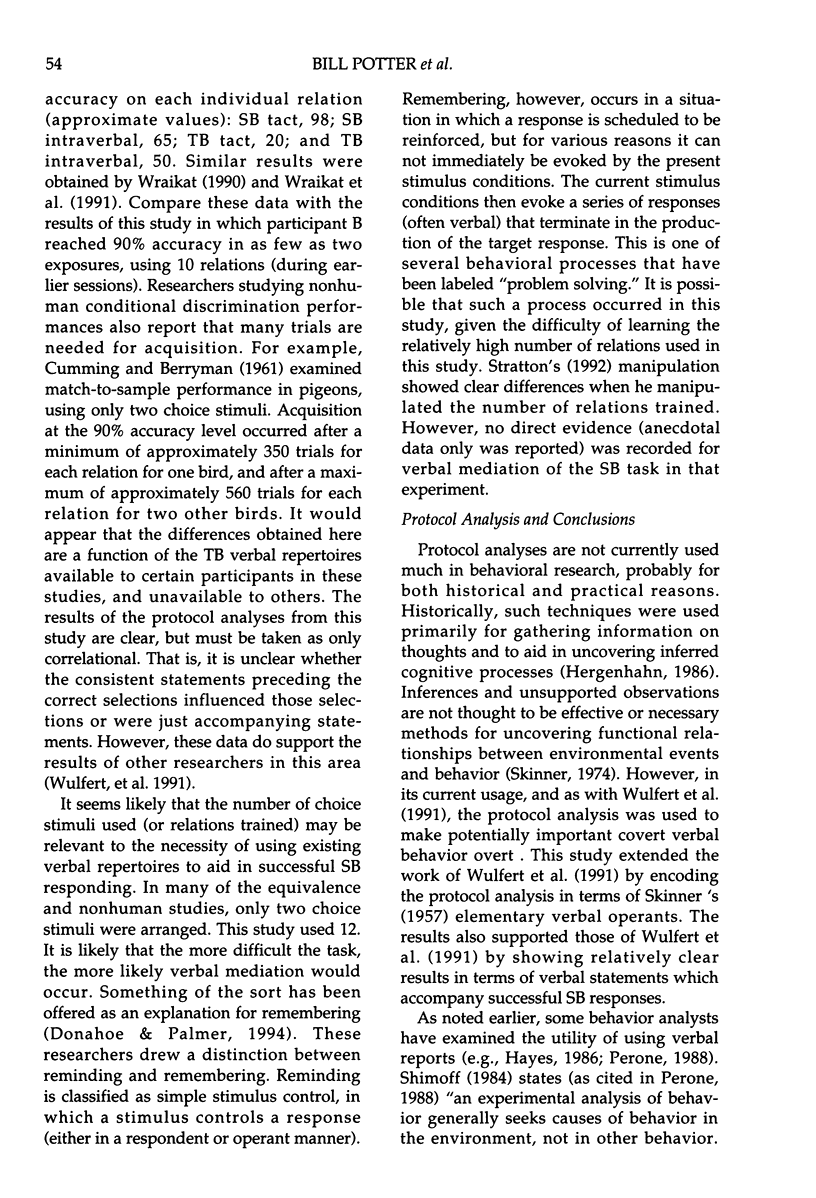
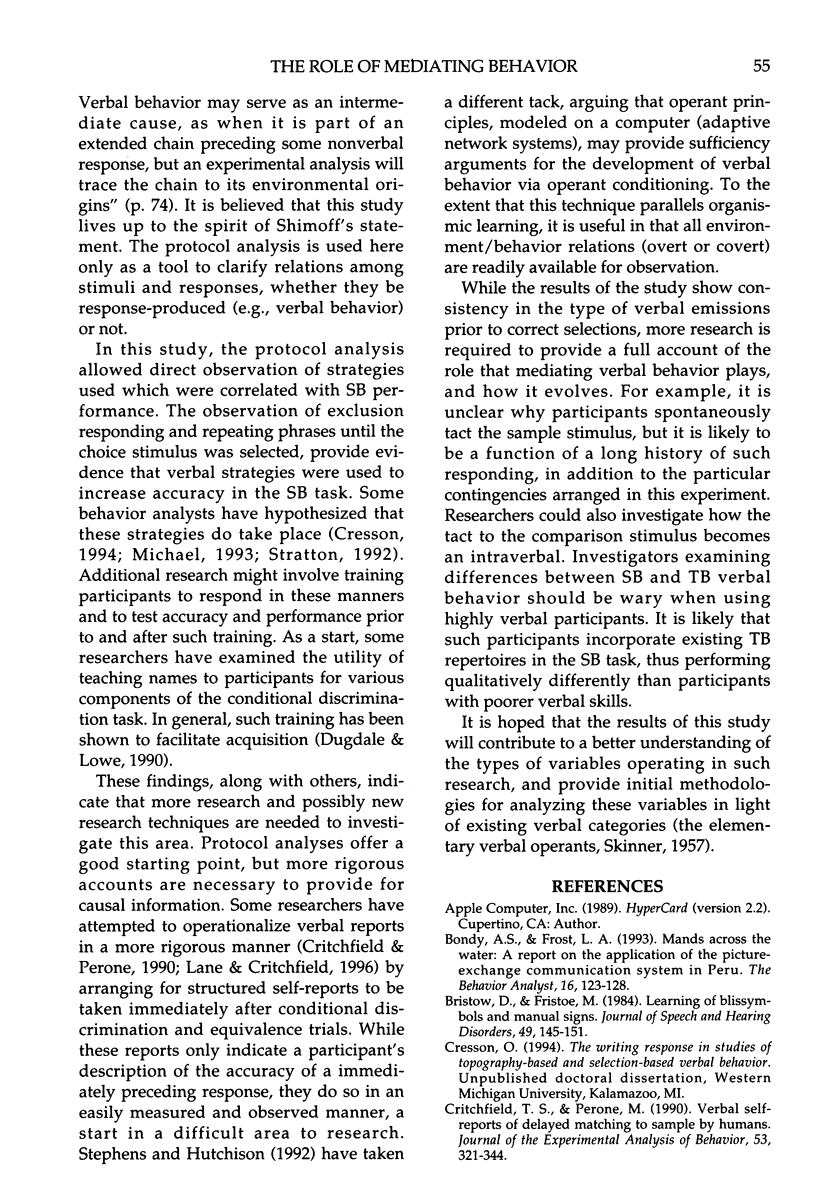
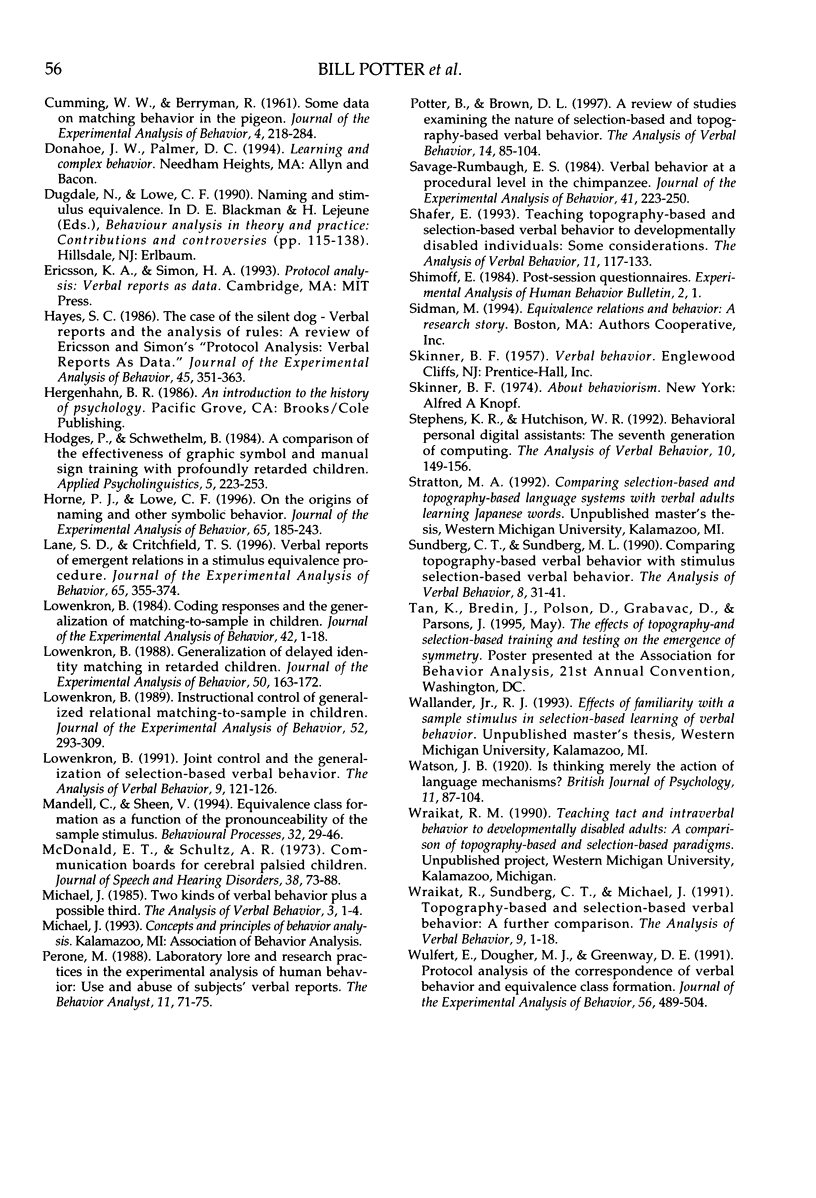
Images in this article
Selected References
These references are in PubMed. This may not be the complete list of references from this article.
- Bondy A. S., Frost L. A. Mands across the water: A report on the application of the picture-exchange communication system in Peru. Behav Anal. 1993 Spring;16(1):123–128. doi: 10.1007/BF03392617. [DOI] [PMC free article] [PubMed] [Google Scholar]
- Bristow D., Fristoe M. Learning of Blissymbols and manual signs. J Speech Hear Disord. 1984 May;49(2):145–151. doi: 10.1044/jshd.4902.145. [DOI] [PubMed] [Google Scholar]
- CUMMING W. W., BERRYMAN R. Some data on matching behavior in the pigeon. J Exp Anal Behav. 1961 Jul;4:281–284. doi: 10.1901/jeab.1961.4-281. [DOI] [PMC free article] [PubMed] [Google Scholar]
- Horne P. J., Lowe C. F. On the origins of naming and other symbolic behavior. J Exp Anal Behav. 1996 Jan;65(1):185–241. doi: 10.1901/jeab.1996.65-185. [DOI] [PMC free article] [PubMed] [Google Scholar]
- Lane S. D., Critchfield T. S. Verbal self-reports of emergent relations in a stimulus equivalence procedure. J Exp Anal Behav. 1996 Mar;65(2):355–374. doi: 10.1901/jeab.1996.65-355. [DOI] [PMC free article] [PubMed] [Google Scholar]
- Lowenkron B. Coding responses and the generalization of matching to sample in children. J Exp Anal Behav. 1984 Jul;42(1):1–18. doi: 10.1901/jeab.1984.42-1. [DOI] [PMC free article] [PubMed] [Google Scholar]
- Lowenkron B. Generalization of delayed identity matching in retarded children. J Exp Anal Behav. 1988 Sep;50(2):163–172. doi: 10.1901/jeab.1988.50-163. [DOI] [PMC free article] [PubMed] [Google Scholar]
- Lowenkron B. Instructional control of generalized relational matching to sample in children. J Exp Anal Behav. 1989 Nov;52(3):293–309. doi: 10.1901/jeab.1989.52-293. [DOI] [PMC free article] [PubMed] [Google Scholar]
- McDonald E. T., Schultz A. R. Communication boards for cerebral-palsied children. J Speech Hear Disord. 1973 Feb;38(1):73–88. doi: 10.1044/jshd.3801.73. [DOI] [PubMed] [Google Scholar]
- doi: 10.1901/jeab.1986.45-351. [DOI] [PMC free article] [Google Scholar]
- Perone M. Laboratory lore and research practices in the experimental analysis of human behavior: Use and abuse of subjects' verbal reports. Behav Anal. 1988 Spring;11(1):71–75. doi: 10.1007/BF03392458. [DOI] [PMC free article] [PubMed] [Google Scholar]
- Savage-Rumbaugh E. S. Verbal behavior at a procedural level in the chimpanzee. J Exp Anal Behav. 1984 Mar;41(2):223–250. doi: 10.1901/jeab.1984.41-223. [DOI] [PMC free article] [PubMed] [Google Scholar]
- Wulfert E., Dougher M. J., Greenway D. E. Protocol analysis of the correspondence of verbal behavior and equivalence class formation. J Exp Anal Behav. 1991 Nov;56(3):489–504. doi: 10.1901/jeab.1991.56-489. [DOI] [PMC free article] [PubMed] [Google Scholar]



